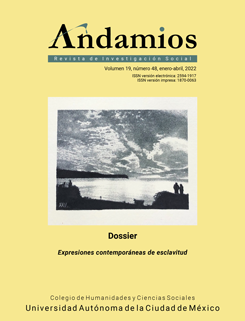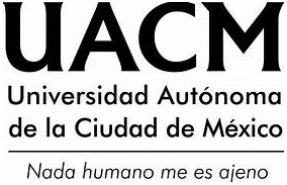Los matices de la explotación: análisis del concepto de trata de personas
DOI:
https://doi.org/10.29092/uacm.v19i48.893Keywords:
Trata de personas, Tráfico ilícito de migrantes, Explotación, Trabajo forzado, Prostitución,Abstract
Se realiza una revisión del concepto de trata de personas para establecer una diferenciación con conceptos afines. Debido a que el concepto de trata reúne múltiples formas de explotación, se analizan las diferencias entre la explotación laboral y la explotación sexual. El estudio permite comprender las ideologías subyacentes al concepto de trata, identificar su utilización como estrategia discursiva y reconocer la amplitud de la experiencia de las víctimas. Se propone incluir el concepto en la agenda para el mejoramiento de las condiciones de los mercados laborales y el reconocimiento de los derechos de trabajadores sexuales.Downloads
Downloads
Published
Issue
Section
License
This Journal is licensed under Creative Commons Mexico 2.5. It is allowed to reproduce and disseminate the contents of the Journal for educational or research purposes, not for profit, as long as they are not mutilated and cite the source (Andamios, Revista de Investigación Social) and the author.
The copyright of the articles published in Andamios, Revista de Investigación Social are transferred by the author(s) to Universidad Autónoma de la Ciudad de México when the originals have been accepted, so that they are published and distributed both in the printed and electronic versions of the Journal. However, as established by law, the author(s) retains their moral rights. The author(s) will receive a form of assignment of copyright that they must to sign when their original has been accepted. In the case of collective articles, the signature of one of the authors will suffice, provided that the latter has obtained the consent of the others.
Authors may use the material of their article in other works or books published by themselves, with the condition of quoting Andamios as the original source of the texts.
The articles contained in this publication are the responsibility of their authors and do not compromise the official position of Andamios, Revista de Investigación Social of the Universidad Autónoma de la Ciudad de México.


